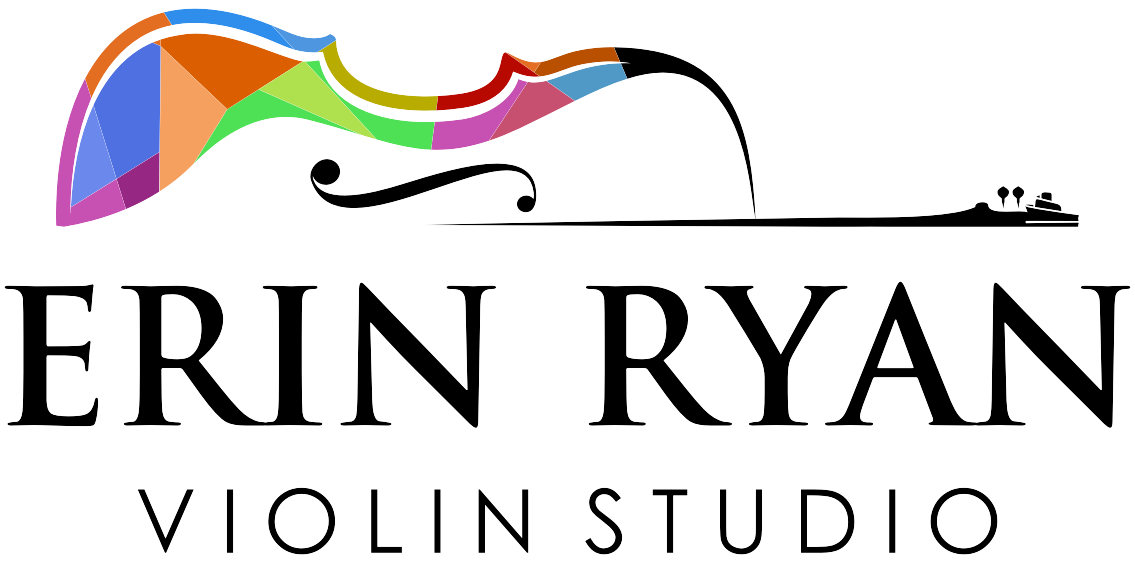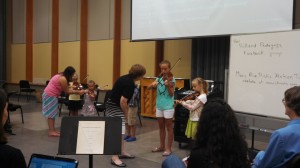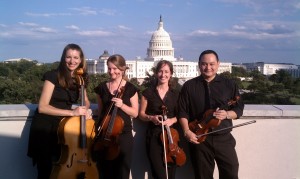Last week I attended a one-day session of a Paul Rolland String Pedagogy Workshop. Paul Rolland was violist and violin teacher who emphasized the importance of freedom of movement in string playing. He created a series of films that demonstrate various techniques in string playing. The films are particularly helpful for string teachers because Rolland used actual developing violin students to show teaching strategies. The workshop I attended was a one-week program at George Mason University. Since I hadn't heard about or attended the program before, I elected to go to the program's "sampler" day. The sessions included helpful information on teaching students about bow control and bowing techniques. It was wonderful to get a little teaching refresher and trade ideas with other string teachers. Below is a picture of violin teacher Lucy Manning demonstrating how to teach bow bouncing (spiccato) to even very young students - our guinea pigs for the afternoon!
Lesson Slots: Get'em While They're Hot!
Hope everyone has had a wonderful summer! As Summer 2012 comes to a close and the temperatures are becoming (ever-so-slightly!) cooler, parents are looking ahead to get their kids back into lessons for the fall. Now is the time sign your son or daughter up for music lessons! This is a very busy time of year for private music teachers. Continuing students return from vacation ready to resume lessons and prepare for the upcoming school year. Brand-spanking-new students, eager to have a head-start on their school strings program, are also signing on for lessons. I currently have just a couple of spaces available for new violin and viola students, so if you are considering it, please do email me asap! A few performances coming up:
- Saturday, August 25, 2012, about 2:30 pm: Playing with a stripped-down trio version of The Beanstalk Library at Jammin' Java at the Ben Tufts & Friends (Craig Tufts Memorial Fundraiser). All ages welcome!
- Sunday, August 26, 2012, 8:00 pm: Joining The Beanstalk Library again, this time in their full rock-band glory, for a house concert at The Paperhaus. More info here.
- Thursday, September 21, 2012, 2:00 pm: Performing with my piano trio (CJ Capen, piano, and Emily Greget, cello) at Reston Center Stage. Program TBA!
The Importance of Ensemble Playing
I sometimes hear that students who are participating solely in private instrumental lessons will become bored and disinterested. Admittedly, playing music all by yourself can occasionally become lonely, and, let’s face it – boring. I encourage all of my students to become involved in some ensemble music-making, whether it’s in school, in an Area Orchestra, a youth orchestra program, or a little chamber music! Some excellent local youth orchestra programs I recommend are the American Youth Philharmonic Orchestras, Youth Orchestras of Prince William, or The Youth Orchestras of Fairfax.
Ensembles give students a chance to improve all aspects of their playing, including rhythm, intonation, and sight-reading. It’s a great way for students to meet peers with similar interests and enjoy a whole new aspect of learning an instrument. Music isn’t just about playing in one’s own practice bubble – it’s about listening, communicating, and interacting with others via your instrument.


